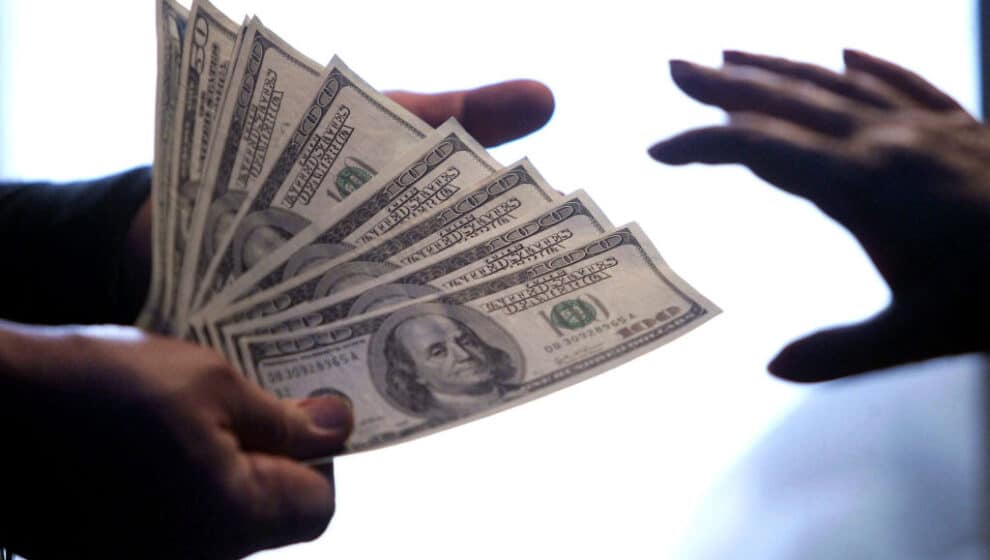The demand for convenience and accountability will likely phase out the U.S. dollar’s popularity within the coming decades—having a profound effect on the way consumers interact with currency.
Key Details
- While Central Bank Digital Currencies (CBDCs) are still hotly debated, digital currency has already taken over the global economy, with 91.7% of all global currency being digital-only—meaning not cash.
- As we previously reported, “reverse ATMs” are beginning to become popularized, swapping cash in exchange for credit for individuals without access to bank accounts.
- The remaining 8% of cash transactions will likely become associated with criminal and illegal transactions within the next two decades.
Why It’s Important
With major bank collapses like FTX and SVB fresh in people’s memory, inflation gradually decreasing from its 9.1% peak in June, and the global economy shifting under the new needs of stakeholder capitalism and the green revolution, it is becoming increasingly inevitable that change is coming. People’s trust in money and institutions are at an all-time low, and the world is facing problems that the monetary system is going to need to catch up with.
CBDCs are the digital form of a government’s currency—issued by central banks that support financial services for a nation, set monetary policy, and issue currency, like the Federal Reserve in the U.S., the Bank of Japan, Bank of England, and the People’s Bank of China.
CBDCs and digital currency are hotly debated. As we previously reported, Treasury Secretary Janet Yellen advocated for a CBDC in September, while Republican politicians have subsequently filed legislation to prevent them from being signed into law. The New York Federal Reserve is experimenting with a CBDC pilot.
Backing Up A Bit
David L. Yermack is the Albert Fingerhut Professor of Finance and Business Transformation at New York University Stern School of Business. He tells Leaders Media that the “cashless society” appears to be an inevitable change instigated by both government and consumer needs as the economy becomes more focused on convenience and transparency. Foreign experiments with CBDCs in nations like China are also likely to incentivize the U.S. to jump to the front of the bandwagon.
“It’s not a new thing. There’s a 50- to 60-year history of people moving toward digital cash and credit cards. The preferences of the population are driving the change and different countries are changing at different rates. The reasons are well understood—it’s inconvenient, there are security issues, and people are growing up handling everything on their phone,” says Yermack.
The Upside to Digital Currency
The benefit of digital currencies—be they CBDCs or bank credit—is that the Federal Reserve will have a great ability to monitor and control the currency. This will create problems, but it will also give the Fed the benefit that comes with full control.
In an economy with high inflation and high-interest rates, it becomes important to ask how the U.S.’s central bank will respond to being given greater power over the currency. As Yermack notes, one of the issues that physical currency creates is hoarding. It is possible for citizens to take thousands of dollars and hide it or use it in off-the-books transactions that cannot be taxed.
“It is an interesting question about how cashless currency is affected by trends. It depends on how exposed the central bank is exposed to rapid movements of money. The system can be slowed down and mediated by settlements from the central bank. The Fed can make changes, but they’re costly for society as a whole. The public sees the rate of return and transparency,” says Yermack.
He also argues that a digital system would likely be more transparent, limiting the dangers of bank runs, leaving further room for surprises, and incentivizing banks and financial institutions to behave more responsibly when all transactions are auditable by the central bank. Inflation could arguably be less of an issue with the Fed directly controlling the currency, “that’s the dream, at least.”
The Downside to Digital Currency
The obvious downside of a CBDC is that it will give the federal government far greater control over the American economy and access to view the citizenry’s finances—which creates obvious privacy concerns and issues with who can control that power and to what ends.
“China has not been shy that they’re using this to surveil the population, and we’re already seeing blowback from red states who are skeptical of it. There are legitimate concerns about the government knowing everything you spend money on, and you would need safeguards and boundaries for how data can be accessed and used,” says Yermack.
Another unpopular downside to digital currency will be that the Fed will be highly likely to implement negative interest rates as an intrinsic aspect of the system, which will be implemented to discourage hoarding and encourage spending. Yermack expected these policies to be very unpopular.
“Governments will have to make these payments electronic so they can delete 2% from your account each year, which will be unpopular, but the market value of credit is going to create little choice. It’s probably inevitable. There’s a glut of savings in the world, and returns are going to get lower,” he says.
Notable Quote
“In some countries, cash is hard to find anymore, and nobody uses it. The question is, do you need banks in a world where we can have accounts at the Federal Reserve and pay on a peer-to-peer basis? What role do banks play in that? I took a sabbatical in Sweden, and the last time I went back cash was completely gone. I had cash from a prior trip, and stores would not take it. The banks do not even take it anymore. You have to flash a QR code at the bank. They’ve organized a network where they do peer-to-peer updates of customer accounts, but they’re starting to become irrelevant—kept going as a jobs program,” says Yermack.
